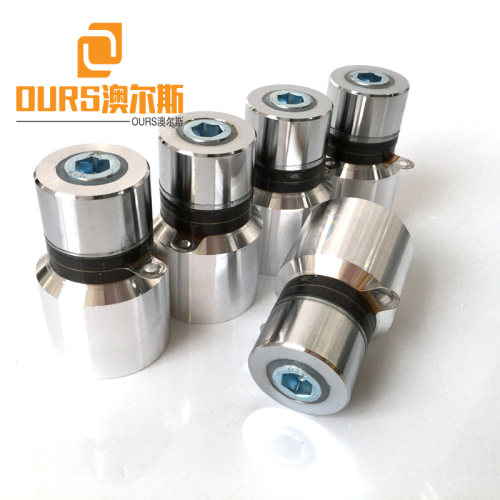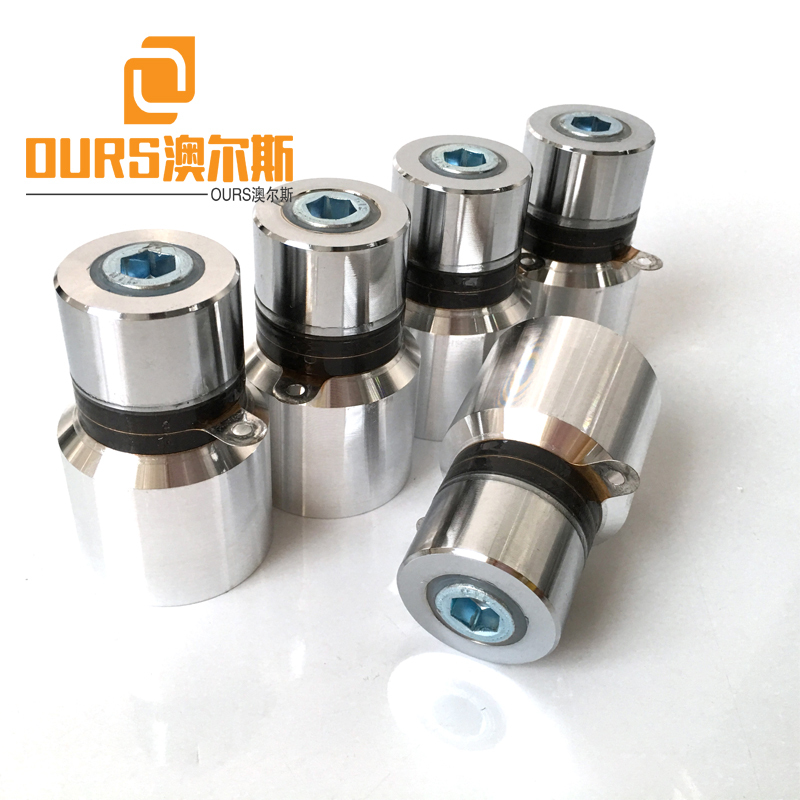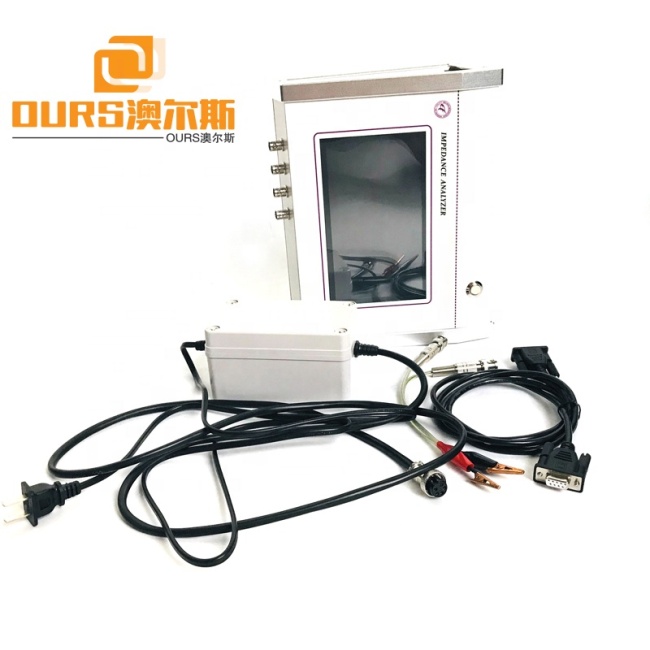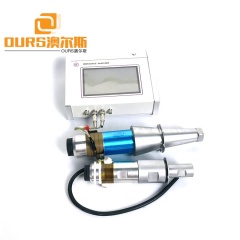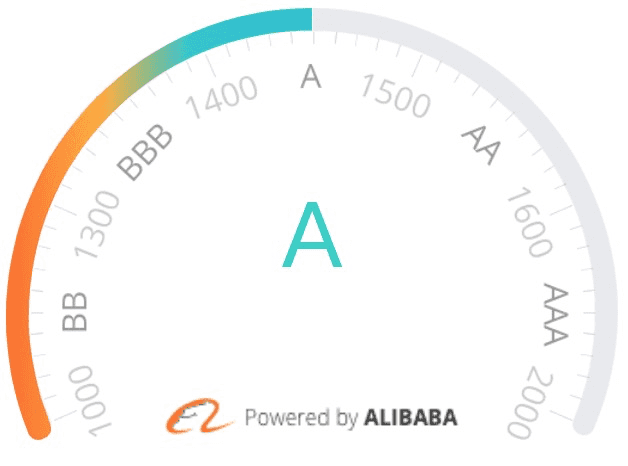Made In China Reliability 50W 28KHZ PZT4 Ultrasonic Cleaning Vibration Sensor For Cleaning Filter
1-499 Piece
$6.50
500 -999 Piece
$6.00
≥ 1000 Piece
$5.50
- Item No.2020112626497MOQ1 Piece
- Product size20 x 15 x 15 cmProduct weight2 kg
Choice
Quantity:

If you have your own design, please contact us, there will have a professional customer service to communicate with you.
Don't have your files right now?No worries, Check out our art tips for more information.
If over 500pcs, mass production will start until pre-production sample has been approved.
Est. 7 days production
Made In China Reliability 50W 28KHZ PZT4 Ultrasonic Cleaning Vibration Sensor For Cleaning Filter

The mechanism of ultrasonic cleaning is to make use of the physical effects such as cavitation, radiation pressure and sound flow in the cleaning liquid. It can exfoliate the machinery produced by the dirt on the cleaning parts, and can also promote the chemical reaction between the cleaning liquid and the dirt, so as to achieve the purpose of cleaning the object. The frequency of the ultrasonic cleaning machine can be selected by 10~500 kHz according to the size and purpose of the cleaning material, generally more than 20~50 kHz. With the increase of the frequency of ultrasonic transducer, Langerhans oscillator, longitudinal oscillator and thickness oscillator can be used. In the miniaturization aspect, radial vibration and flexural vibration are also adopted. Ultrasonic cleaning has become more and more widely used in various industries, agriculture, household equipment, electronics, automobile, rubber, printing, aircraft, food, hospital and medical research.
The transducer uses different piezoelectric materials to explain that:
The black chip is P4 series, which is a medium power emitting material with dual transmitting and receiving characteristics.
With low dielectric loss and high mechanical quality factor, it is mainly used in ultrasonic cleaning, ultrasonic atomization and so on.
The Yellow chip is P8 series, which is a high-power emission material with high mechanical quality factor.
Good stability, very low dielectric loss, especially suitable for making high-power ultrasonic transducers. Widely used in
Ultrasonic welding, ultrasonic emulsification, ultrasonic polishing, ultrasonic cleaning and so on.
Main Features:
- High Q value.
- Large amplitude.
- High conversion frequency, low heat.
- Output is stable.
- Strict quality control.
Everyone knows that the inside of the vibration plate is composed of ultrasonic vibrators. When the working frequency of the cleaning machine is very low (within the range of human hearing), noise will be generated. When the frequency is lower than 20kHz, the working noise not only becomes very loud, but may exceed the safety noise limit stipulated by the Occupational Safety and Health Law or other regulations. In applications that require high power to remove dirt without considering the surface damage of the workpiece, a lower cleaning machine frequency in the range of 20kHz to 40kHz is usually selected. The cleaning frequency in this frequency range is often used to clean large, heavy parts or high-density materials. The ultrasonic vibrators produced by Boda Ultrasonic have two fixed low-frequency ultrasonic vibrators of 28KHZ and 40KHZ.
High frequency is usually used to clean smaller, more precise parts, or to remove tiny particles. High frequency is also used in applications where the surface of the workpiece is not allowed to be damaged. Using high frequency can improve cleaning performance in several ways. As the frequency increases, the number of cavitation bubbles increases linearly, which generates more and denser shock waves that can enter smaller gaps. If the power remains the same, the cavitation bubble becomes smaller, and the energy released by it is reduced accordingly, which effectively reduces the damage to the surface of the workpiece. Another advantage of high frequency is that it reduces the viscous boundary layer (Ponuri effect), allowing ultrasound to'discover' extremely fine particles. And our Boda high frequency ultrasonic vibrator also has 68KHZ, 80KHZ, 100KHZ, 120KHZ.
To install an ultrasonic vibrator, you must first understand the structure of the ultrasonic vibrator and the working principle of the ultrasonic vibrator. In fact, the ultrasonic vibrator is also called the ultrasonic vibrator. In the industry, the whole of the transducer and the horn is called the vibrator.
The ultrasonic vibrator is a device that realizes the mutual conversion between electrical energy and mechanical energy (acoustic vibration) by the piezoelectric effect of piezoelectric ceramics, and amplifies the device through the front and rear radiation cover blocks that match the acoustic impedance. The ultrasonic vibrator is composed of an ultrasonic transducer and an ultrasonic horn. Ultrasonic transducer is a device that can convert high-frequency electrical energy into mechanical energy. Ultrasonic horn is a passive device that does not produce vibration itself, but only changes the vibration input from the ultrasonic transducer before transmitting it out. The impedance transformation.
Install the ultrasonic vibrator steps and preparation tools:
1. Preparation tools: Argon arc welding, No. 10 hexagon wrench, chromium iron tin wire, 2.5 square high temperature wire, 2*2.5 cable wire, vibrator glue, (wire stripper, casing, cable tie, sandblasting machine, Pipe fittings, etc.).
2. Welding screws: Calculate the placement of the vibrator, weld the screws at the cleaned position, and then clean the surrounding of the screw, make sure to make it flat, so as not to affect the installation of the vibrator.
3. Glue configuration: Stir the glue evenly according to the specified ratio. (Merry, Araldite, 4030 glue is mixed before bonding, and KMD398 glue is mixed during the bonding process).
4. Install the vibrator: smear the glue evenly on the bottom of the ultrasonic vibrator, gently twist to squeeze out the air and excess glue between the bottom of the transducer and the contact surface of the cylinder bottom, so that the vibrator is more tightly combined with the stainless steel as a whole .
5. Curing and condensing: curing in a relatively high room temperature place, 4-8 hours can be connected, after 24 hours, you can power on the test machine, the test machine is absolutely not allowed to be air vibration.
Remarks: 1. There are metal nailing machines that can also replace argon arc welding. 2. The welding screws must be fully welded, otherwise they will fall off easily. 3. Regarding curing, temperature should be considered for the length of time. If the temperature is low, the time will be long, and if the temperature is high, it will be faster. It is recommended to operate at room temperature.
1. Ultrasonic vibrator mainly includes several parts such as shell, acoustic window (matching layer), piezoelectric ceramic disc transducer, backing, lead-out cable, array receiver and so on.
2. Among them, the piezoelectric ceramic disc transducer plays the same role as the general transducer, mainly used to transmit and receive ultrasonic waves; and above the piezoelectric ceramic disc transducer is the Cymbal array receiver, It is mainly composed of lead-out cables, transducers, metal rings and rubber washers. It is used as an ultrasonic receiver to receive the Doppler callback signal generated outside the frequency band of the piezoelectric ceramic disc transducer.
3. The ultrasonic dishwasher vibrator is actually a piezoelectric ceramic with the same frequency as its resonant frequency, which uses the piezoelectric effect of the material to convert electrical energy into mechanical vibration. Generally, ultrasonic waves are first generated by an ultrasonic generator, which is converted into mechanical vibration by an ultrasonic transducer, and then ultrasonic waves can be generated by an ultrasonic deriving device and an ultrasonic receiving device.
Ultrasonic transducer application:
1. Among all the cleaning methods, ultrasonic cleaning is the most efficient and effective one. The reason why ultrasonic cleaning can achieve such an effect is closely related to its unique working principle and cleaning method.
2. We know that in production and life, there are many things that need to be cleaned, and there are many types and links that need to be cleaned, such as: removing contaminants from objects, dredging small holes, and common manual cleaning methods for special-shaped objects and hidden parts of objects. Undoubtedly, it cannot meet the requirements. Even steam cleaning and high-pressure water jet cleaning cannot meet the higher cleanliness requirements. Ultrasonic cleaning can also bacteria, dissolve organic pollutants, and prevent over-corrosion. Therefore, ultrasonic cleaning Is increasingly widely used in all walks of life:
(1) Machinery industry: removal of anti-rust grease; cleaning of measuring tools; degreasing and rust removal of mechanical parts; cleaning of engines, carburetors and auto parts; dredging and cleaning of filters and screens, etc.
(2) Surface treatment industry: degreasing and rust removal before electroplating; cleaning before ion plating; phosphating treatment; removing carbon deposits; removing oxide scale; removing polishing paste; surface activation treatment of metal workpieces, etc.
(3) Instrumentation industry: high cleanliness of precision parts, cleaning before assembly, etc.
(4) Electronic industry: Removal of rosin and solder spots on printed circuit boards; cleaning of mechanical and electronic parts such as high voltage contacts.
(5) Medical industry: cleaning, disinfection, sterilization of medical equipment, cleaning of laboratory utensils, etc.
(6) Semiconductor industry: high cleanliness cleaning of semiconductor wafers.
(7) Watch first and decoration industry: remove sludge, dust, oxide layer, polishing paste, etc.
(8) Chemical and biological industries: cleaning and descaling of laboratory utensils.
(9) Optical industry: degreasing, sweating and dust removal of optical devices.
(10) Textile printing and dyeing industry: cleaning textile spindles, spinnerets, etc.
(11) Petrochemical industry: cleaning and dredging of metal filters, cleaning of chemical containers, exchangers, etc.
Type | Length(mm) | Weight(g) | Frequency(KHz) | Resonance Impedance | Static Capacity | Input Power(W) |
ARS-QXHNQ20100 | 94 | 900 | 20 | 10-20 | 5200 | 100 |
ARS-QXHNQ25100 | 77 | 710 | 25 | 10-20 | 6600 | 100 |
ARS-QXHNQ28100 | 66 | 625 | 28 | 10-20 | 5200 | 100 |
ARS-QXHNQ28100 | 66 | 624 | 28 | 10-20 | 6600 | 100 |
ARS-QXHNQ30100 | 61 | 555 | 30 | 10-20 | 5200 | 100 |
ARS-QXHNQ2560 | 77 | 530 | 25 | 10-20 | 5400 | 60 |
ARS-QXHNQ2860 | 68 | 470 | 28 | 10-20 | 3800 | 60 |
ARS-QXHNQ2850 | 82 | 425 | 28 | 10-20 | 4100 | 50 |
ARS-QXHNQ3360 | 58 | 420 | 33 | 10-20 | 3800 | 60 |






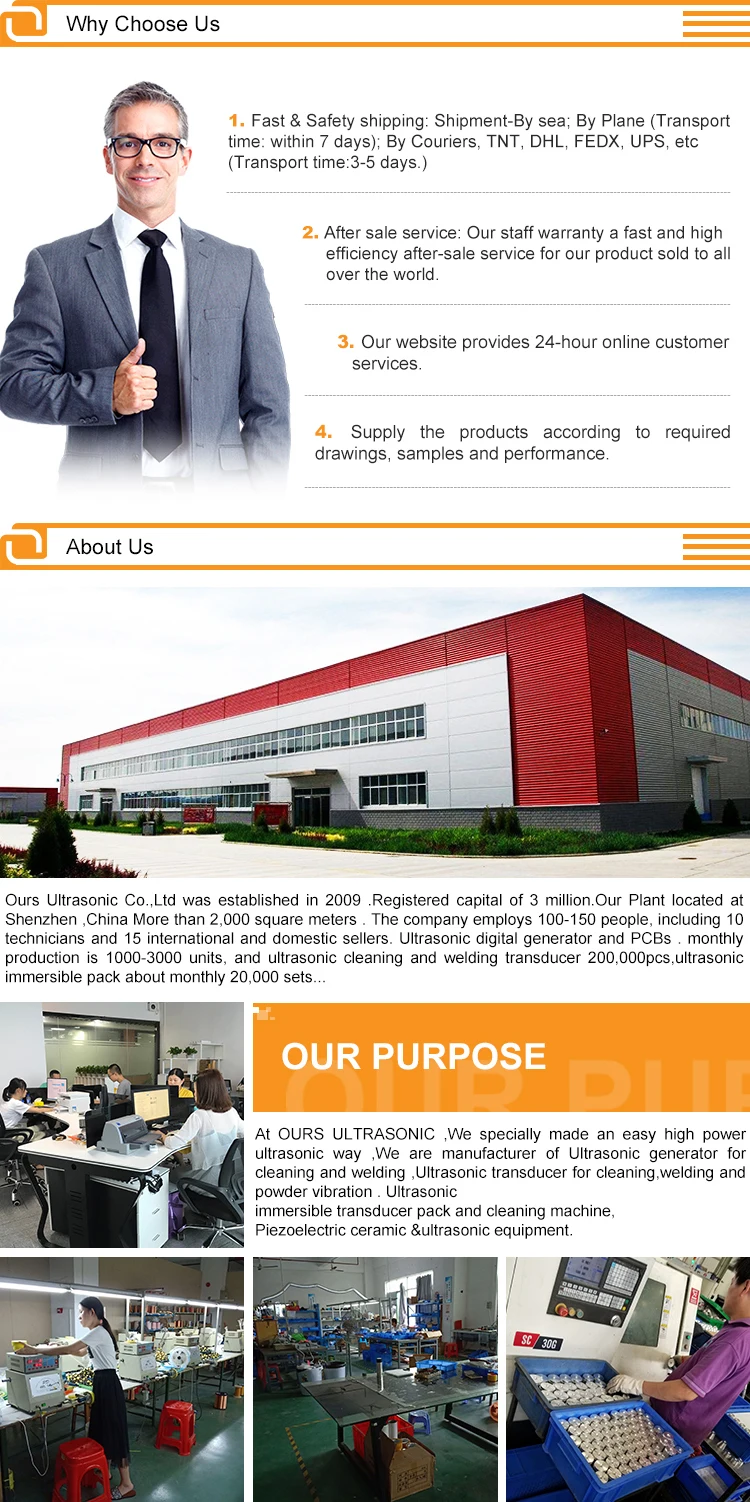
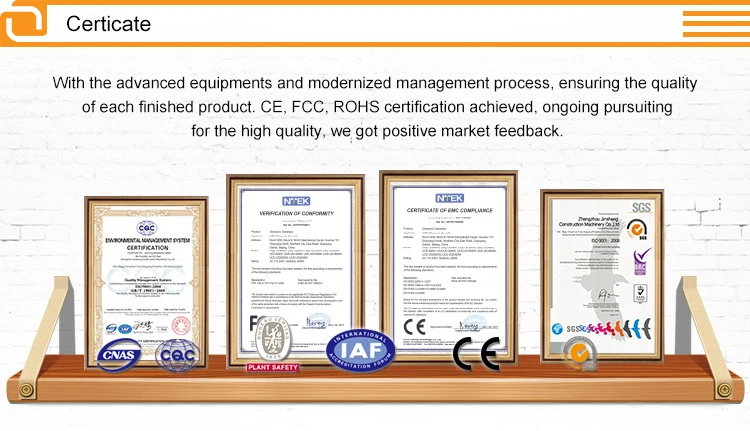





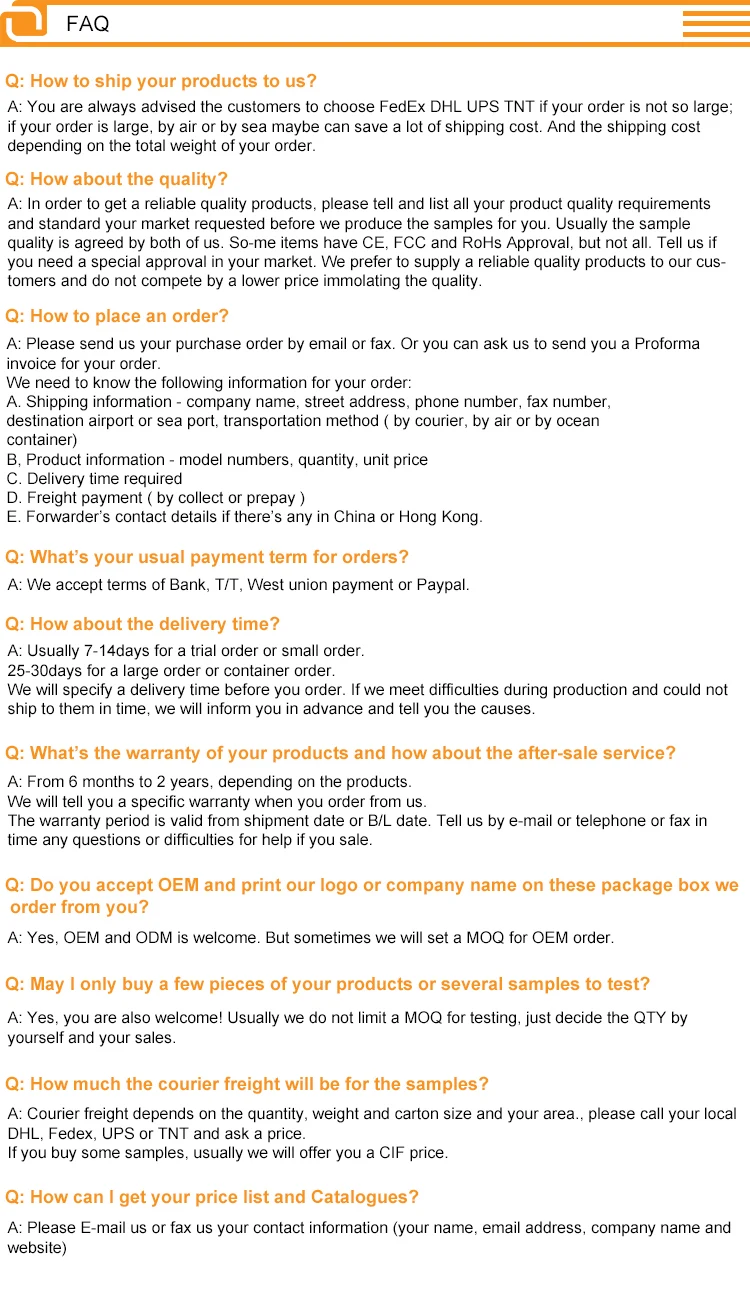
Made In China Reliability 50W 28KHZ PZT4 Ultrasonic Cleaning Vibration Sensor For Cleaning Filter
Send your message to us
No need register, just fill in contact info below, we will reply you within 24 hours!

 English
English German
German French
French Russian
Russian Spanish
Spanish Japanese
Japanese Korean
Korean Portuguese
Portuguese Ukrainian
Ukrainian Arabic
Arabic Italian
Italian